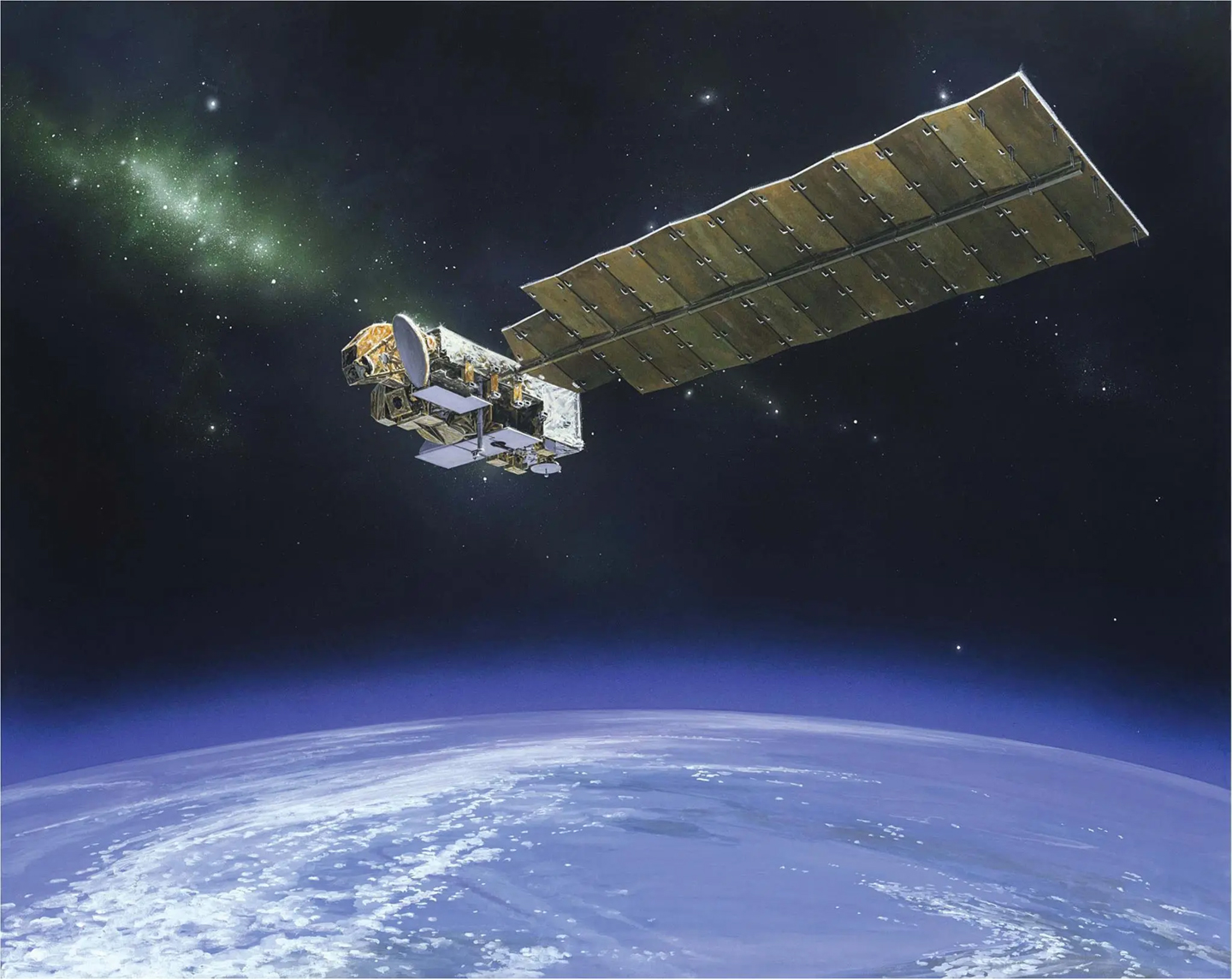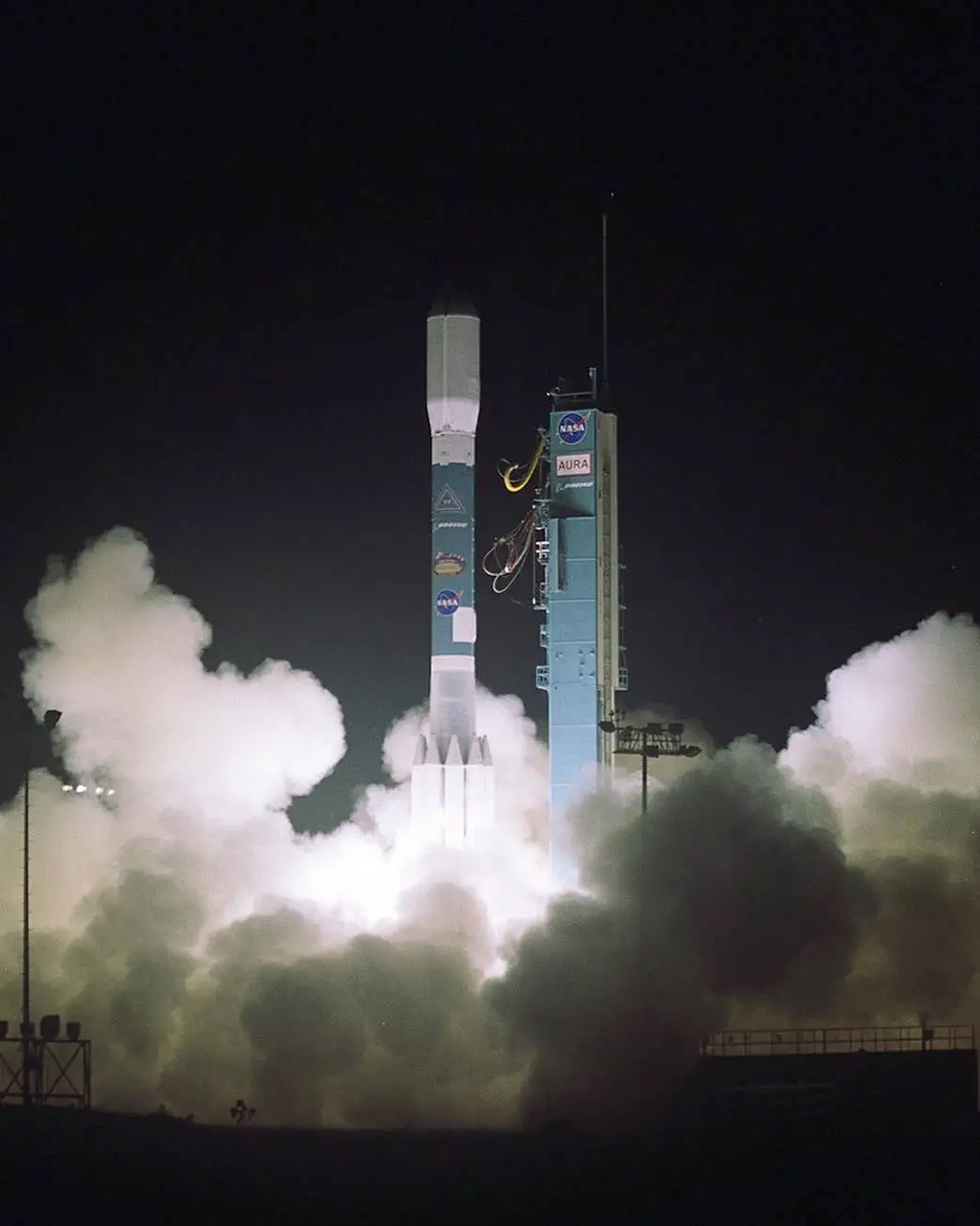
14 min read
Introduction
In the 1990s and early 2000s, an international team of engineers and scientists designed an integrated observatory for atmospheric composition - a bold endeavor to provide unprecedented detail that was essential to understanding how Earth's ozone (O3) layer and air quality respond to changes in atmospheric composition caused by human activities and natural phenomena. This work addressed a key NASA Earth science objective. Originally referred to as Earth Observing System (EOS)-CHEM (later renamed Aura,) the mission would become the third EOS Flagship mission, joining EOS-AM 1 (Terra) launched in 1999 and EOS-PM 1 (Aqua), launched in 2002. The Aura spacecraft - see Figure 1 - is similar in design to Terra and identical to Aqua. Aura and its four instruments were launched on July 15, 2004 from Vandenberg Air Force Base (now Space Force Base) in California - see Photo.


In 2014 The Earth Observer published an article called "Aura Celebrates Ten Years in Orbit






